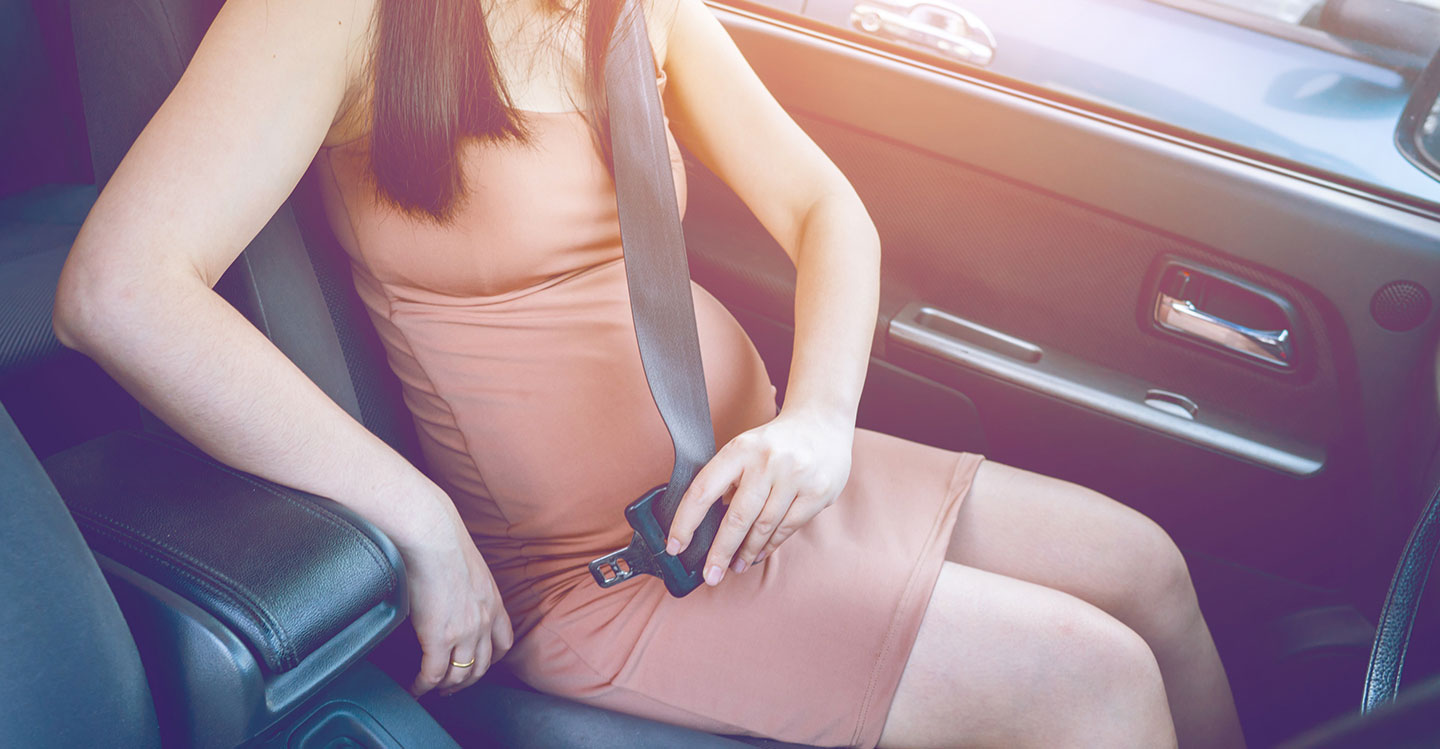Car safety during pregnancy

Healthcare appointments, baby prep, work, groceries, seeing friends: as your pregnancy progresses, life doesn’t slow down…in fact, it’s often the opposite! While jumping into the car might be getting more uncomfortable, there’s no need to avoid it (unless you’ve been advised otherwise by your healthcare provider). But there are a few things to be aware of when you buckle up with a bump.
Why pregnant women may need to take extra precautions when driving
Pregnancy presents a set of almost daily challenges for women’s bodies – which makes sense because your body is undergoing some pretty significant changes! Feelings of nausea or faintness are common even into the third trimester, and, if overwhelming, they can affect the safe operation of a vehicle. Swelling, cramps and muscle tightness may also make driving uncomfortable and become a distraction for you, so good to be aware of how you’re feeling and adjust your routines to suit your changing body.
How to wear a seatbelt when pregnant
“Below the bump”
The safest way to wear a seatbelt while you’re pregnant is to make sure the lower strap is underneath your bump and firmly across your pelvis, as close to your lap as it can sit. The sash part of the seatbelt should come down across your chest, travelling from your shoulder down diagonally, staying above your bump. The goal is to avoid your seatbelt sitting directly on your bump.
In every state and territory of Australia, all passengers in a car must wear a seatbelt – it is illegal not to. Wearing a seatbelt while you’re pregnant is especially important because it reduces the risk of injury to you or your unborn baby in the event of an accident.
Staying comfortable and safe in the car while pregnant
Comfy clothes are everything when you’re pregnant – so whenever you can, bring that to the car as well. They’ll protect your skin from the seatbelt rubbing, make getting in and out of the car easier, and reduce discomfort from tight or restrictive bands or straps while you’re out and about.
Check if the steering wheel, mirrors, and seat need adjusting so you can comfortably and safely operate the car and get in and out as easily as possible.
You can use a small cushion to support your back if you need (or try rolling up some clothing). Whatever you add to make yourself more comfortable, make sure it is secure and doesn’t move around while you’re driving as this could become a distraction.
Gentle stretches before and after driving can increase your circulation and relieve any tired muscles. Ask your physio or health professional for some tips if driving or sitting in a car is particularly uncomfortable and you can’t avoid it.
Taking road trips when pregnant
Avoid taking longer trips on your own when pregnant – try to partner up with someone to either share the driving duties or have them manage the driving on your behalf, particularly towards the end of your pregnancy.
If you are taking long car trips late in your pregnancy, it’s a good idea to keep your pregnancy plan and hospital or birthing bag in your car, and factor in frequent rest stops and bathroom breaks. Adding a few towels is never a bad idea, either – your waters bursting everywhere doesn’t usually happen like in the movies, but it’s not impossible!
Check in with yourself
At some point you may decide to stop driving until after the birth of your baby. Maybe your growing bump is impeding your ability to use the steering wheel or the car’s other controls, or maybe getting in and out of the driver’s seat is getting increasingly difficult. Driving is a convenient way to get around, but don’t put yourself under undue pressure to keep driving if it’s unsafe or uncomfortable to do so.
Whether you decide to keep driving or not, we recommend planning ahead and ensuring you are prepared with alternative modes of transport, or have the support of people close to you if you need it.


